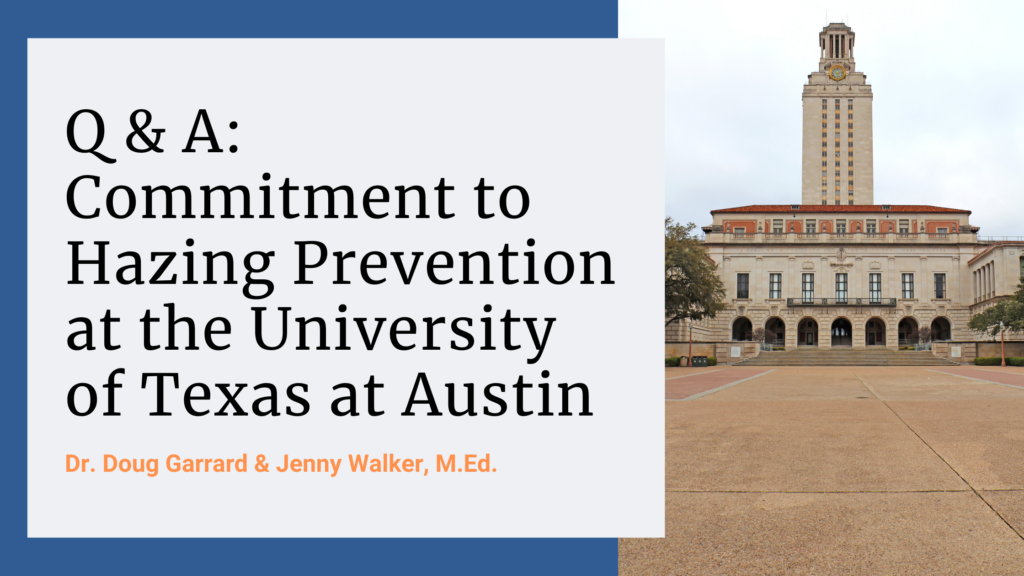Q & A: Commitment to Hazing Prevention at the University of Texas at Austin

When we launched the Campus Commitment to Hazing Prevention: Action Guide in partnership with the Clery Center late last month, we heard from leaders about their campus’ commitment to hazing prevention.
Keep reading to learn more about the University of Texas at Austin’s commitment to hazing prevention from Associate Vice President of Student Life, Doug Garrard, Ed.D. and Jenny Walker, M.Ed., Prevention & Risk Management Coordinator.
1. What are some examples of commitment to hazing prevention at the University of Texas at Austin?
Commitment at The University of Texas at Austin towards hazing prevention stems from leadership and is executed through strong working relationships with both on and off campus-stakeholders and dedicated staff. In 2013, our institution formed a campus-wide hazing prevention committee, that still operates today and allows for our hazing prevention work to be grounded in a campus-wide approach. Additionally, through funding provided by our Vice President of Student Affairs and alumni donors we have dedicated staff for hazing prevention. These staff engage with current and incoming students and community members in changing the narrative around hazing through ongoing educational offerings grounded in research.
2. How do we get more leaders to take a visible stance and allocate resources and funding, and prioritize hazing prevention?
I think it involves a shift in perspective. I think leaders can easily wrap their arms around the harms of hazing. Which sometimes leads to an emphasis on enforcement of rules. This often leads to to hazing prevention being viewed primarily as a student affairs issue. While setting high expectations around hazing prevention is critical, understanding that hazing prevention should be viewed along with other high risk behaviors that occur on campus can help engage the entire campus community in this conversation. Shifting the conversation to a change in culture helps to transform the perspective and dialogue, and provides the opportunity to engage more stakeholders. Having good data on how students view hazing is critical to this conversation.
3. How do we keep the momentum going for hazing prevention?
The adage “it takes a village” comes to mind – At the University of Texas at Austin we have some strong partners in our hazing prevention efforts. This support starts with our UT Systems Office and our campus executive leadership, and extends to the many on-campus and off-campus partners who are engaged in hazing prevention efforts. These partnerships have created a support system around our student-facing initiatives. Additionally, the partnerships have allowed us to utilize existing networks to promote hazing prevention efforts, increasing the visibility and creating momentum for hazing prevention efforts across campus. Culture change takes time. Expanded ownership in hazing prevention efforts – from our students, to partners, to parents, to advisors and donors – has been an important part of keeping the momentum for this change to occur.
Thank you Dr. Garrard and Jenny Walker for sharing these examples and helpful suggestions for campus professionals to consider as they commit to hazing prevention!
Remember to go download the Campus Commitment to Hazing Prevention: Action Guide – it is a collection of resources to boost commitment to hazing prevention on campus!
